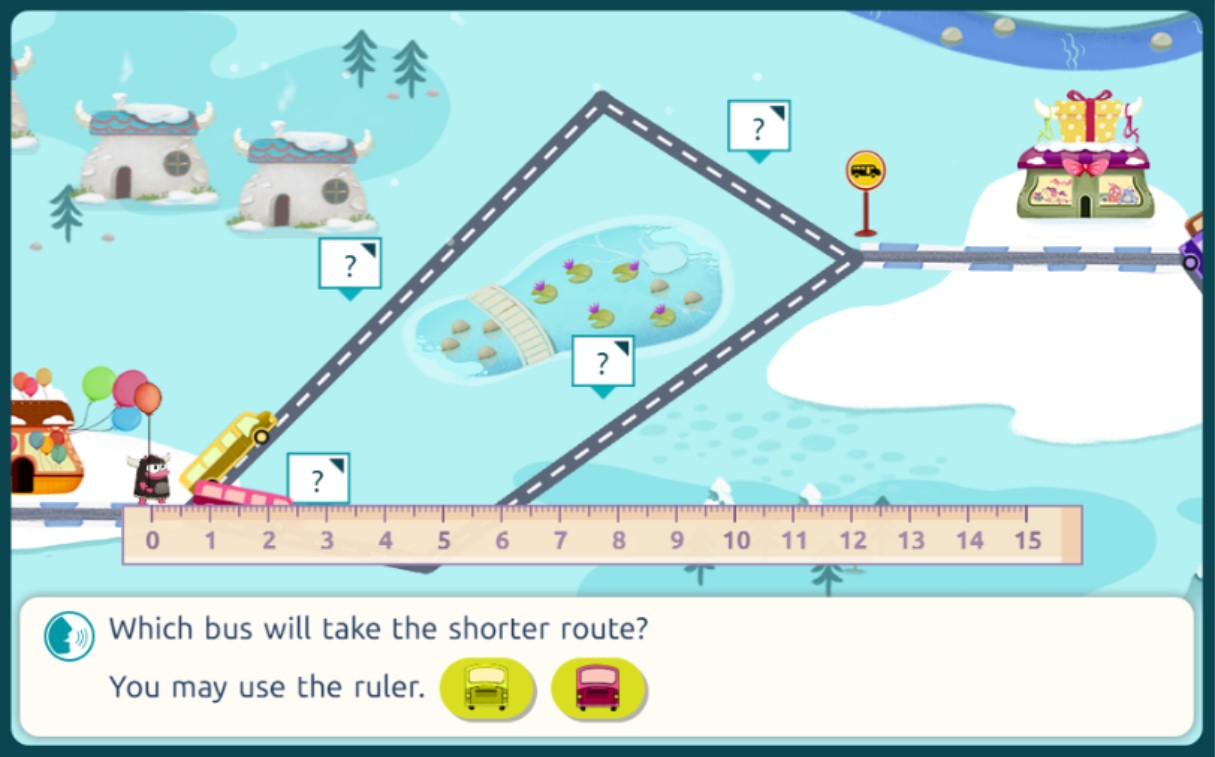
3 Ways to Overcome the Math Monster
“This is boring!” your student proclaims while solving a worksheet.
In another corner of the room, students chatter instead of getting their work done.
The math monster has attacked them all!
In a recent webinar, Ms. Jacky Herman, Educational Advisor to Matific, explored some of the main reasons students check out during math and how this affects their performance. She also offered solutions to help boost students’ interest and understanding of math.
The Math Monster
Students find math boring and feel like it's an academic monster for a variety of reasons including:
Long Lectures: When teachers talk and explain procedures, students may find this boring. Teachers often resort to these methods because they’re pressured to get through a lot of curriculum in very little time.
Students Don’t Get it: Another common reason students get bored is that they don’t understand maths. They haven’t had the opportunity to explore math and develop a deep conceptual understanding. Also, because each student learns differently, it’s possible not all of their needs are being met.
They’re Scared and Anxious: Making mistakes is often scary for students. After all, mistakes get marked with a red pen and result in a poor mark. Students often think that math is all black and white and that there’s no room for mistakes.
Math doesn’t have to be this way! Here are three solutions for getting rid of the math monster:
#1 Help Students Explore Math
Renowned psychologist Jean Piaget once said, “Every time we teach a child something, we keep him from inventing it himself.”
In other words, we need to give children the chance to explore math rather than giving them all of the answers. Yes, teachers can help students understand concepts and give them strategies. But, when problem-solving, students need to be able to discern which operations to use and decide how to solve the problem.
Another way to help students explore is by celebrating and encouraging mistakes. Did you know that when children make mistakes, they grow synapses? Mistakes help the brain work productively and learn more! Teachers can help students feel more comfortable with mistakes by taking the pressure off. Opt for more formative assessments and observations to track your students’ progress. Using math journals is one great way to do this! Also, limit how often you turn math activities into competitions. Instead, encourage multiple paths to find solutions and collaboration.
#2 Avoid Word Problem Pitfalls
Word problems are a popular math exercise. Yet, the average word problem brings many pitfalls with it, making students bored and even anxious. Here are some common pitfalls:
- Topics are boring. Who buys 50 bananas at the supermarket? Adults make memes about this because math problems often involve ridiculous fictional scenarios that wouldn’t happen in real life.

- Some topics (like sports) can require background knowledge and also alienate students who aren’t interested in the topic.
- Many word problems test reading comprehension instead of math skills. Students who aren’t native speakers often struggle because of this.
- Can be turned into a contest. “Who can solve this word problem first?” This doesn’t encourage careful analyzing, but rather speed. Speed isn’t the goal!
- Many word problems only use one operation and lack complexity.
#3 Bring in Technology...But Don’t Forget the Real World
Students love using technology in the classroom. With a good quality math app, you can boost student motivation while also building a deep understanding of math topics.
Math apps shouldn’t just pop a worksheet up on a screen. Instead, a quality math app will include manipulatives, gamification, encourage exploration, personalize each students’ experience, and more. Plus, problem-solving activities should be dynamic, engaging, and have multiple correct answers.
Here’s just one example of a Matific activity that makes problem-solving fun.

In this activity, students manipulate the ruler on the screen to determine which bus will take a shorter route.
Students not only measure, but add, think about quantities and lengths, and then determine the answer. There is even a backstory that motivates children to continue! They want to help the character in the story arrive at the party on time.
This sort of creative problem-solving is not only fun but encourages trial and error by keeping the environment low-stakes.
In the webinar, Ms. Herman also encouraged teachers to use a variety of teaching methods and strategies to reach all students. She suggests that teachers take word problems and math scenarios and recreate them in real life! In this case, a teacher might ask children to measure different routes within the school to get to the gym, cafeteria, or office! Students can use a large roll of measuring tape to complete the activity. Then, they can compare their routes and see which one is shorter.
The math monster doesn’t have to take over your classroom. With these three strategies, you can help your students become problem-solving masters while also eliminating maths anxiety.
The Math Monster: Problem-Solving Pain, How can digital Help?